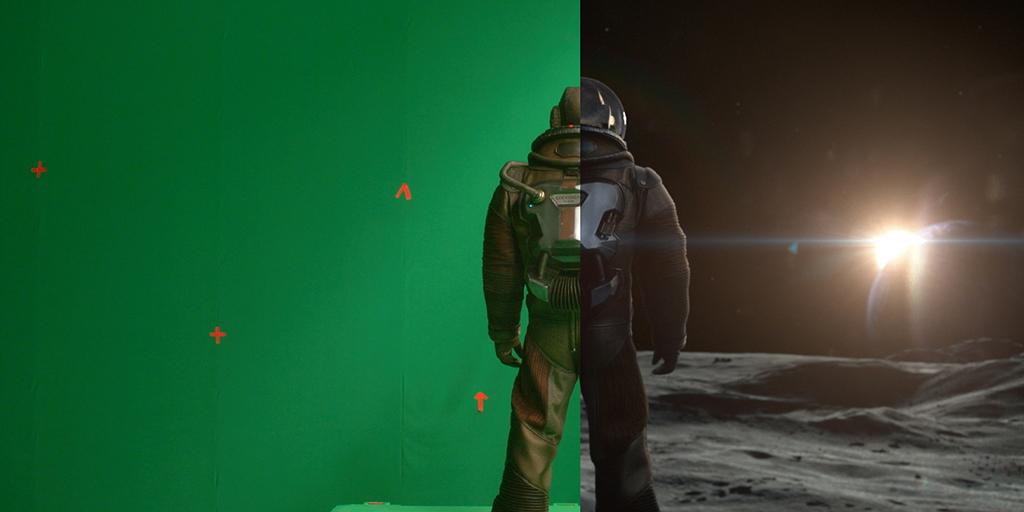In the ever-evolving landscape of blockbuster cinema, visual effects have become the cornerstone of storytelling, transforming the unimaginable into vivid reality. As audiences demand increasingly spectacular experiences, directors are tasked with pushing the boundaries of creativity and technology. This article delves into the top directorial approaches to visual effects, examining how visionary filmmakers blend artistry with innovation to craft mesmerizing cinematic experiences. From seamless integration to groundbreaking techniques, we explore the strategies that define modern movie magic and set new standards in the art of visual storytelling.
Crafting Spectacle: Understanding the Directors Vision
In the realm of blockbuster cinema, the director’s vision is the guiding star that transforms mere pixels into awe-inspiring spectacles. Visual effects are not just technical embellishments; they are integral narrative tools that shape the audience’s experience. Directors employ a myriad of approaches to weave these effects seamlessly into the fabric of their storytelling.
- Immersive World-Building: Directors like James Cameron and Peter Jackson push the boundaries of digital landscapes, crafting worlds so rich and detailed that they become characters in their own right. This approach often involves pioneering technology to ensure that every frame feels alive.
- Practical Effects Integration: Filmmakers such as Christopher Nolan prioritize the tangible feel of practical effects, often blending them with CGI to maintain a sense of realism. This method ensures that the audience remains anchored in the film’s reality, enhancing emotional engagement.
- Innovative Storytelling Techniques: Directors like the Wachowskis and Denis Villeneuve use visual effects to challenge conventional narrative structures, offering fresh perspectives and engaging the audience in unexpected ways. These techniques often redefine how stories are visually perceived.
By understanding these varied approaches, one can appreciate how directors harness the power of visual effects not merely to dazzle, but to deepen the storytelling experience.

Integrating Technology: Seamless Visual Narratives
In the realm of blockbuster cinema, directors are pushing the boundaries of what’s possible by merging traditional storytelling with cutting-edge technology. The result is a seamless integration of visual effects that enhances narrative depth and emotional impact. Directors are increasingly adopting a holistic approach where VFX is not just an afterthought but a core component of the storytelling process. This involves early collaboration between directors, VFX supervisors, and production designers to ensure that every effect serves the story’s thematic elements.
- Pre-Visualization: Utilizing advanced pre-vis tools to map out complex sequences, allowing for precise planning and creative exploration before shooting even begins.
- In-Camera Effects: Combining practical effects with digital enhancements to maintain authenticity and provide actors with tangible elements to interact with.
- Real-Time Rendering: Employing game-engine technology to render scenes in real-time, facilitating instant feedback and adjustments during production.
By embedding these technologies into the fabric of their storytelling, directors are crafting immersive experiences that resonate with audiences on a profound level, setting new standards for visual storytelling in cinema.

Balancing Realism and Fantasy: The Art of Visual Storytelling
In the realm of blockbuster cinema, the fusion of realism and fantasy through visual effects is a craft honed by visionary directors. These filmmakers employ distinct approaches to create immersive worlds that captivate audiences while maintaining a believable narrative structure. Some key techniques include:
- Seamless Integration: Directors like Christopher Nolan emphasize practical effects, blending them with digital enhancements to maintain a tangible authenticity. This approach keeps the audience grounded, even amidst fantastical settings.
- Stylized Reality: Filmmakers such as Guillermo del Toro embrace a more stylized aesthetic, using visual effects to amplify the surreal aspects of their storytelling. This technique allows for a heightened emotional impact while preserving narrative coherence.
- Emotional Resonance: Visionaries like James Cameron focus on the emotional core of their stories, using visual effects to amplify character-driven moments. This strategy ensures that the fantastical elements serve the narrative rather than overshadow it.
By carefully balancing these elements, directors transform their cinematic visions into compelling visual stories that resonate deeply with audiences, bridging the gap between the conceivable and the fantastical.

Innovative Techniques: Pushing the Boundaries of Imagination
In the realm of visual effects, directors are constantly exploring groundbreaking techniques to craft experiences that transcend traditional storytelling. One such approach is the seamless integration of CGI with live-action footage, where directors like James Cameron have pioneered methods to blur the lines between reality and imagination. This technique not only enhances the visual appeal but also deepens the audience’s emotional connection with the narrative.
Another innovative method involves the use of virtual reality environments during pre-production. Directors such as Jon Favreau have utilized VR to meticulously plan complex scenes, allowing for precise camera movements and lighting setups. This practice not only streamlines production but also fosters a more immersive and coherent visual experience. By leveraging these techniques, filmmakers are not just pushing the boundaries of what’s possible but are redefining the very essence of cinematic storytelling.
- Seamless CGI Integration: Enhances realism and emotional engagement.
- Virtual Reality Pre-Production: Optimizes scene planning and execution.

